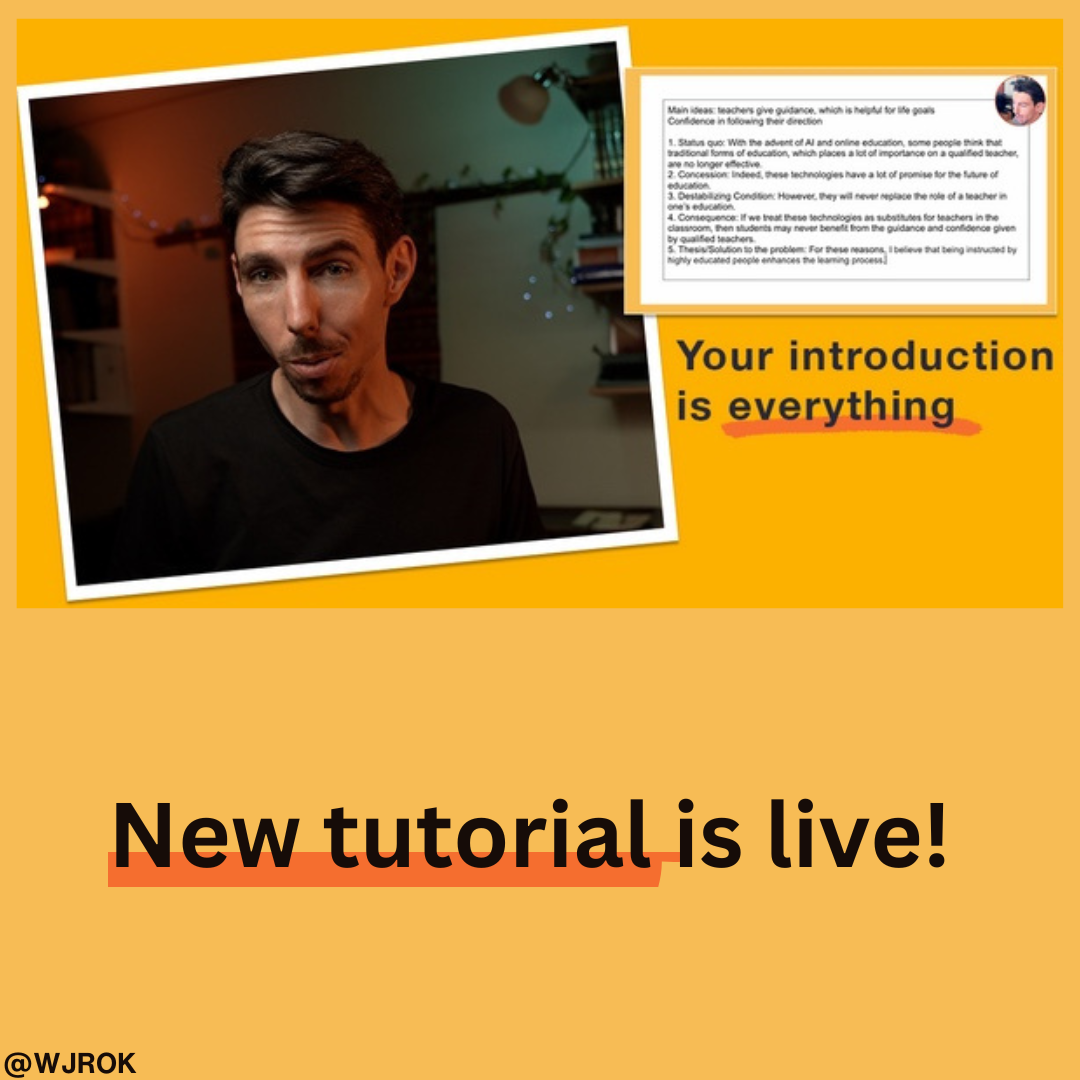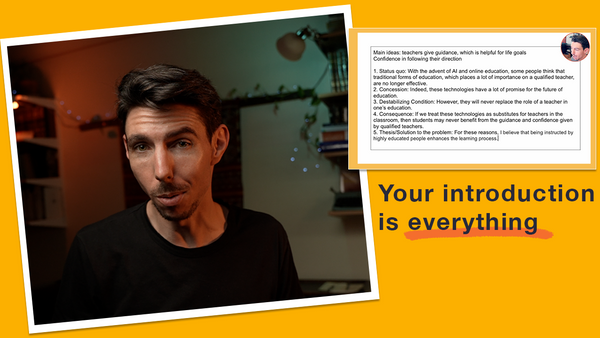Together, we can put an end to the generic introduction template (Hook - Transition - Thesis).
💬 In this week’s issue:
- Shiny Object Syndrome. How do cut distractions and focus on what's most important.
- Motivation. (Both kinds!)
- Introductions. Readers don't care about the topic; they care about problems and their solutions.
Was this email forwarded to you? Subscribe here!
The Woman in the Red Dress

Lately I've been suffering from shiny object syndrome, a condition that's also known as the woman in the red dress.
In the movie The Matrix, Neo and Morpheus are walking through a busy city street, and at one point Neo's attention is captured by a beautiful woman wearing a red dress. When he regains his attention, Morpheus asks: 'Were you listening, or were you paying attention to the woman in the red dress? Turn around.' When Neo turns around, he sees not the woman but an agent pointing a gun at him.
So it is with starting a business. There are no shortage of shiny objects that I could tend to, especially in the rapidly expanding market of online education. Here are just some of the plates that I've been spinning:
- Growing a YouTube channel (just hit 300 subscribers! 🥳);
- Writing for a blog and growing a mailing list (thanks for subscribing 🥰);
- Building a client base for IELTS exam tutoring (currently working with students from Iran, Saudi Arabia, Vietnam, and Argentina);
- Developing an online course about writing scientific research reports (the first lesson is live 👀);
- To make my videos more dynamic and visually appealing, I've been learning to create animations in Adobe After Effects (you'll see samples in my latest videos);
- Building an online school (yes, seriously; but more on that later).
Oh, right – and I also have a full-time job as an English professor.
Writing that out just now made me realize why I feel so spread thin. Each one of these projects is a woman in the red dress: an attractive distraction from what really counts when it comes to moving a business forward.
It's not that any of them are bad ideas; it's just that giving 15% of my attention to each one means that none of them will succeed. Instead, I need to give 100% of my attention to just one of them.
So with all that being said, let me introduce to you my latest shiny object: a podcast!
I know, I know; but hear me out:
The kind of YouTube videos that I like to make are dynamic, fun, and narrative-based. But they're a heavy lift, and with all my other responsibilities I can sometimes go months without making one.
I wanted to find an easier way to produce language-learning content without having to go through all the trouble of researching, scripting, editing, etc., and I didn't want to include it in the same bucket as my regular YouTube content.
What if I could just come home after work and put out a quick lesson that might help someone?
Thus, I give to you The Writing Up Podcast.

This is program has a simple format by which I can deliver a single writing tutorial - usually the one I had taught my academic writing class earlier in the week - which means that my audience can get a university-level English education straight to their inbox.
However, unlike podcasts, this show doesn't feature any ads or sponsorships, so I've decided to release half the episode for free and to give full access to subscribers for a small fee of $8.33 per month.
🫶 My Favorite Things️
🎮 Gamification - GrowingPains.guru Recently I met with Felipe Muñoz-Jaramillo, an expert in Growth and Gamification Design, to learn about the principles of game design and how to bring them into the online learning experience.
📘 Book - Why They Cant Write: Killing the Five-Paragraph Essay and Other Necessities This book makes the case that writing templates, such as the infamous 5-paragraph essay, are like training wheels: we think they help children learn to ride a bike, when in fact they prevent riders from practicing cycling's most essential skill: balance. Similarly, when we teach students to write Potemkin essay structures and tell them that writing is simply a matter of inputting the words, they lose the opportunity to practice writing's most essential skills: agency and resilience.
🏫 Online Learning - Section School A big inspiration for the online school I've been building has been Section School, an online business school founded by Scott Galloway at NYU.
Naming Topics vs. Posing Problems

Mainstream EFL textbooks generally teach students to write introductions that use the following structure:
- Attention Grabber
- Transition
- Thesis
When my tutoring clients bring me essays that open like this, I always bring their attention back to the reader.
These introductions do a good job at presenting the topic, but they do little to show the reader why the topic is worth reading about.
As any entrepreneur will tell you, for something to be valuable it needs to solve a consumer's problem. Similarly, for an essay to be valuable, it needs to solve a problem, or at least try to (the word essay derives from the French for 'to attempt, to try').
So to convince the reader to read the rest of our essay, we want to demonstrate that value right up front. And the best way to do that is to position our thesis as the solution to a problem.
For that reason, I put together this tutorial to help students write essay introductions: Writing Essay Introductions (Writing Up #02)
Discover how to write essays that demonstrate value by following these five moves:
- Status Quo: The way things are right now
- Concession: What's good about the way things are?
- Destabilizing Condition: What's the problem with the way things are?
- Consequence: What negative outcome is likely to occur if we don't solve this problem?
- Thesis: What's your solution to the problem?
Don't miss out on these valuable insights! Check out the full post→
💬 Quote
One thing I've been thinking about a lot lately as I design courses and an online school is the nature of motivation. How can we design learning experiences to trigger that innate drive we all have to learn and achieve?
Instrumentally motivated learners have a pragmatic reason for learning a language, such as passing a high school exit examination or getting a better job, while integratively motivated learners want to learn the language so that they can get to know its people and culture.
“People use rewards expecting to gain the benefit of increasing another person’s motivation and behavior, but in so doing, they often incur the unintentional and hidden cost of undermining that person’s intrinsic motivation toward the activity.”
❤️ Enjoy this newsletter?
If you think the content I make is valuable and want to support it, the single best thing you could do is to forward to a friend and let them know where they can subscribe (hint: it’s here).
Anything else? Hit reply to send me feedback or just say hello.
